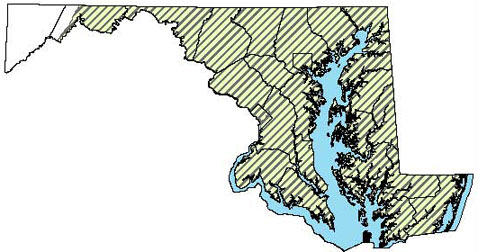Field Guide to Maryland's Turtles (Order Testudines)
Main_Content
Northern Red-bellied Cooter (Pseudemys rubriventris) | Common Name: Northern Red-bellied Cooter |

Photo of Northern Red-bellied Cooter courtesy of John White.
|
Size: 10 - 12½ inches. Record - 15¾ inches. |
Appearance:
- A large basking turtle, easily identified due to its size.
- Reddish plastron (bottom shell).
- Domed carapace (top shell) with vertical reddish line on the three front-most costal scutes (these are on either side of the centerline or “vertebral” scutes). The latter may be faded to reddish-brown in older individuals.
- Coloration and pattern of the carapace is variable.
- The upper jaw has a central notch bordered by two tooth-like cusps.

Photo of Habitat for Northern Red-bellied Cooter
courtesy of Rebecca Chalmers.
|
Habitats:Usually associated with deep-water areas of coastal plain rivers and associated floodplain marshes, and ponds. Typically found in areas with a soft silt bottom, lots of aquatic vegetation and numerous basking sites, such as logs and debris. Can also be found in brackish water, near river mouths.
|
How to Find:Look for basking turtles from March to November along the shorelines of large Eastern Shore rivers. This species is shy and difficult to approach, so it is best to view from afar with binoculars.
Canoe or kayak in quietly for a close-up view.
|
Distribution in Maryland:Primarily a Coastal Plain species but can be found as far west as Allegany County.

|
|
